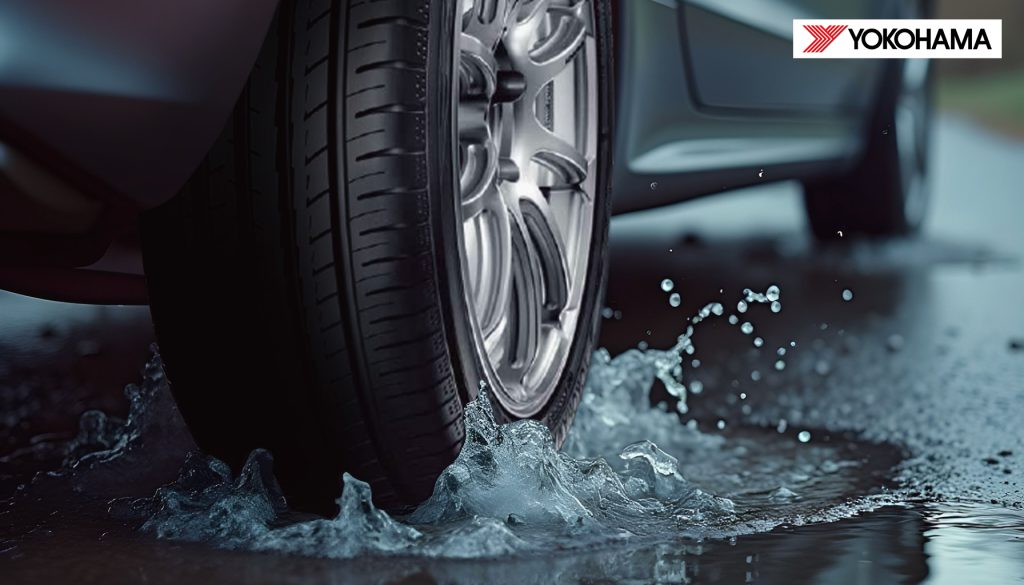A bumpy ride at low speeds is more than just annoying—it’s often a warning sign. Whether you’re crawling through traffic or cruising down a side street, unusual vibrations and jolts can point to issues that affect your comfort, safety, and wallet.
In this guide, we’ll explore what causes bumpiness at low speeds, what to check first, and what to do if your car feels rough even on a smooth road.
Common Causes of a Bumpy Ride at Low Speeds
1. Tyre Problems
Tyres are the first place to check. If they’re not in good condition, even a short, low-speed drive can feel bumpy.
Flat spots or internal damage may also cause discomfort—particularly if your tyres have been stationary for extended periods. In some cases, you might even experience issues like a tyre bulge or sidewall blister, both of which require immediate attention. These conditions reduce structural integrity and increase the risk of blowouts.
If you’re noticing vibrations or rumbling at slow speeds, check for objects embedded in the tyre, low pressure, or worn out tyres with less than 3mm of tread. Drivers should also be aware of cracked tyres or visible tyre sidewall cuts—both can compromise grip and lead to instability at any speed.
2. Wheel Alignment Issues
If your wheels are out of alignment, the car may feel unstable or drift to one side, especially when driving slowly. Misalignment usually happens after hitting a pothole, mounting a kerb, or simply from wear over time.
Alongside bumpiness, you might also notice the steering feels “off” or your tyres are wearing unevenly. These are signs it’s time for a wheel alignment check.
3. Suspension Troubles

Your suspension system is designed to smooth out imperfections in the road. But when key parts like shocks or struts wear down, they stop doing their job—and you’ll feel every bump.
Tell-tale signs of suspension issues include:
- Excessive bouncing after going over a speed bump
- One corner of the car sitting lower than the others
- Fluid leaking near the shocks or struts
These components can also get damaged from bottoming out or repeated hits to potholes, making your ride noticeably rougher.
4. Axle or Rim Damage
If you’ve recently driven over a large obstacle or hit something hard, you may have bent an axle or rim. A bent axle causes your wheels to spin unevenly, resulting in a rhythmic thudding or bumping sensation, especially at low speeds.
In some cases, even a slightly damaged wheel rim can throw off your ride smoothness—especially if the tyre can’t maintain proper contact with the road surface.
5. Brake System Issues
Do you feel vibrations primarily when slowing down? That’s usually brake-related. Warped brake discs, stuck calipers, or debris lodged in the brake system can all cause sudden jerks or shudders.
It’s not just annoying—it’s a safety concern. Any irregularities in the brake system should be checked immediately.
6. Engine or Transmission Problems
If the car lurches when you press the accelerator, the issue could be under the hood. A misfiring engine, poor fuel-air mix, or bad spark plugs can all cause jerky movements, especially during initial acceleration.
Similarly, if the car hesitates or surges during gear changes, you might be dealing with a transmission issue. These problems can start subtle but worsen quickly if left unaddressed.
What To Do If Your Car Feels Bumpy
Here’s how to narrow down the problem and fix it before it becomes a costly repair:
- Check your tyres: Look for flat spots, uneven wear, and ensure all tyres are inflated to the recommended pressure. A tread depth under 3mm means it’s time to replace them.
- Schedule a wheel alignment: Especially if you’ve recently hit a kerb or pothole.
- Inspect your suspension: If your car bounces after a bump or feels unstable in turns, get a professional suspension check.
- Listen while braking: Vibrations when decelerating are likely brake-related and need immediate attention.
- Think back: Recent road impacts could have damaged your axle or rims.
- Pay attention to how your car accelerates: Jerking or hesitation might point to engine or transmission issues.
- Call in a professional: Certified mechanics can accurately diagnose and repair these issues.
Don’t Ignore the Warning Signs
A bumpy ride isn’t just an inconvenience—it’s a symptom. Left unchecked, it could lead to bigger, more dangerous problems like brake failure or suspension collapse. Worse yet, it could compromise your control of the vehicle in critical situations.
Regular maintenance, careful driving, and prompt attention to irregularities are your best bets for keeping your car safe and smooth.
If your tyres are aging, losing pressure quickly, or showing signs of cracking or deformation, they could be compromised. In such cases, it’s helpful to understand when to change tyres based on tread wear and vibration levels.
Final Thoughts: Take Action Before It Gets Worse
If your car feels bumpy at low speeds, especially on smooth roads, it’s your vehicle’s way of telling you something’s wrong. Check your tyres, alignment, suspension, brakes, and engine performance. Minor issues now can snowball into major repairs—and safety risks—later.
With over 100 years of Japanese tyre innovation, car tyres Malaysia from Yokohama deliver the performance, comfort, and durability that local drivers trust. From the track-ready ADVAN, to the all-terrain GEOLANDAR, and eco-conscious BluEarth series, Yokohama has a solution for every drive and condition.
Explore Yokohama’s full product range, expert tips, and authorised dealer network through their official Malaysia site.
FAQ
Why Your Car Feels Bumpy on a Smooth Road
If everything looks perfect—pavement is flat, weather is calm—but your car still feels rough, the problem almost always lies with the tyres or suspension.
Flat spots, uneven tread wear, and low pressure can all make even the smoothest road feel jarring. Likewise, worn shocks or struts fail to absorb minor imperfections, amplifying road noise and vibration.
Why Your Car Jerks During Acceleration
That sudden jerk when you tap the gas? It’s likely an issue with either the engine or transmission. Misfires, clogged fuel injectors, or a failing ignition coil can disrupt smooth power delivery.
If the jerking is more noticeable when the car shifts gears, your transmission may be slipping or struggling to engage properly. Either way, it’s worth having a mechanic diagnose the issue before it worsens.
Why Your Car Shakes at High Speeds but Not Low
Unlike low-speed bumpiness, shaking at high speeds usually points to tyre imbalance or worn suspension parts. Even slightly uneven tyres can cause major vibration once you’re above 80 km/h. This often starts as a light shake in the steering wheel and gradually worsens.
Brake rotors and wheel alignment may also contribute, especially if the shaking gets worse when you decelerate from highway speeds.


